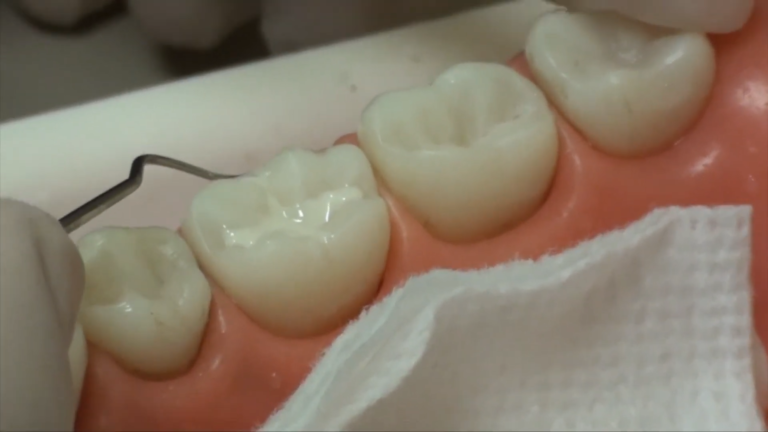Is Thumb Sucking Harmful to Baby Teeth Development?
Thumb sucking is one of the most common self-soothing habits among infants and toddlers. It provides comfort, helps babies feel secure, and often helps them fall asleep. But as a child grows, many parents begin to wonder: could this seemingly innocent habit cause problems for their baby’s developing teeth?
The short answer is—it depends. Thumb sucking is a completely normal behavior in early infancy. However, if it continues beyond the toddler years, it can begin to interfere with the healthy development of the mouth, teeth, and jaw.
Let’s explore when thumb sucking becomes a concern, what dental issues it may cause, and how you can gently help your child break the habit if needed.
Why Babies Suck Their Thumbs
Thumb sucking often begins in utero and continues into early childhood as a natural reflex. It’s soothing, comforting, and can be a powerful coping mechanism, especially during times of stress or change (such as starting daycare or weaning from the bottle).
Most children outgrow the habit naturally between the ages of 2 and 4. Occasional thumb sucking in this age range usually doesn’t cause harm. However, the intensity, duration, and frequency of the habit matter more than the habit itself.
What Can Happen if Thumb Sucking Continues Too Long?
When thumb sucking becomes a long-term habit—especially beyond the age of 4—it can start to interfere with how a child’s teeth and jaws grow. The impact is especially noticeable if the child sucks with strong force or does it frequently throughout the day and during sleep. Over time, the constant pressure of the thumb in the mouth can cause several changes in the structure and alignment of the teeth, as well as the shape of the oral cavity.
Here are the most common dental and developmental issues that may result from prolonged thumb sucking:
- Open Bite
This occurs when the front upper and lower teeth no longer touch each other when the child closes their mouth. Instead of the teeth coming together in a proper bite, there’s a noticeable gap between them. An open bite can make it difficult for children to bite into foods like sandwiches or apples and may affect their speech. - Overbite (Protrusion of Upper Front Teeth)
Prolonged thumb sucking can push the top front teeth forward so that they stick out farther than they should. This condition, known as an overbite or dental protrusion, can affect a child’s facial appearance and increase the risk of injury to the front teeth—especially if the child falls or bumps their mouth. - Narrowing of the Upper Jaw (Palate Constriction)
The thumb applies gentle but constant upward pressure on the roof of the mouth (palate). Over time, this pressure can cause the upper jaw to become narrower than normal. A narrow upper jaw often results in dental crowding and can contribute to a crossbite, where the top and bottom teeth do not fit together correctly when the mouth is closed. - Speech Development Issues
The way teeth and the palate develop affects how children pronounce sounds. Thumb sucking can interfere with this process and may lead to speech difficulties such as lisps, difficulty pronouncing “S” and “Z” sounds, or improper tongue positioning during speech. Some children may also develop delayed speech patterns or articulation issues that require therapy to correct. - Changes in the Shape of the Palate (Roof of the Mouth)
The persistent presence of the thumb in the mouth can also alter the natural shape of the palate, making it higher and more narrow. This can affect how the teeth come in and may influence breathing patterns, especially at night. In some cases, it can even contribute to mouth breathing or snoring.
The severity of these effects varies from child to child and largely depends on how often, how long, and how forcefully the child sucks their thumb. Children who only occasionally suck their thumb lightly are less likely to experience long-term dental consequences, while those who do so vigorously and regularly are at greater risk for developmental issues.
That’s why early monitoring and gentle intervention are key. Your pediatric dentist can evaluate whether your child’s habit is affecting their oral development and offer guidance or treatment options if needed.
How Can You Help Your Child Stop Thumb Sucking?
If your child is still sucking their thumb after the age of 4, or if you’re beginning to notice changes in how their teeth are coming in—such as spacing, bite issues, or even subtle speech differences—it’s time to start addressing the habit with care. The key is to approach it with patience, empathy, and encouragement, not with criticism or punishment. Children often turn to thumb sucking for comfort or stress relief, so breaking the habit requires understanding the emotional connection behind it.
Here are thoughtful, child-friendly strategies to help your little one let go of thumb sucking:
1. Understand the triggers and emotional needs
Observe when and why your child tends to suck their thumb. Is it during bedtime, when watching TV, or when they feel anxious or tired? Identifying these emotional or situational triggers is the first step. Once you know what’s driving the behavior, you can offer healthier coping alternatives—like providing a cuddly stuffed toy, a calming bedtime routine, or a few extra moments of one-on-one comfort. This helps meet the emotional need without relying on the thumb.
2. Offer praise and emotional support
Instead of pointing out when your child is sucking their thumb, make a conscious effort to praise the moments when they don’t. For instance, if they go a car ride, nap, or movie without thumb sucking, recognize their effort with a genuine, positive remark like, “I noticed you didn’t suck your thumb while we were reading—that was amazing!” This builds their confidence and reinforces their success.
3. Use reward systems with clear, achievable goals
Many children respond well to visual and tangible reinforcement. Consider creating a reward chart where your child can earn stickers or stars for every thumb-sucking-free day or milestone. Set small, realistic goals first—such as no thumb sucking during a specific activity—then gradually increase the duration. Once they meet their goal, reward them with something meaningful (but not overly extravagant), like extra playtime, a new book, or choosing a favorite dinner.
4. Introduce gentle physical reminders
As your child becomes more motivated to stop, subtle reminders can help them stay aware of the habit—especially during sleep or when they’re distracted. You can try placing a soft cotton glove or mitten over their hand at night, applying a child-safe bandage to the thumb, or using a specially designed thumb guard. These tools are not meant to punish or shame—they simply interrupt the habit gently and remind the child of their goal.
5. Involve your pediatric dentist in the process
Your child’s dentist is an excellent resource for support and guidance. At your next checkup, bring up the topic of thumb sucking. A pediatric dentist can evaluate whether the habit is affecting your child’s dental development and offer tailored advice based on their age, temperament, and oral condition. In persistent cases, the dentist may recommend a thumb-sucking appliance—a small device placed in the mouth to discourage the habit passively and safely, often used as a last resort after other techniques haven’t worked.
When Should You Be Concerned About Thumb Sucking?
While thumb sucking is common and often harmless in infancy and toddlerhood, there comes a point when it’s important to pay closer attention. If your child is over the age of 4 and still regularly sucking their thumb—especially during the day or while sleeping—it may be time to seek professional guidance.
By this age, most children have begun losing baby teeth and growing permanent teeth, and the continued pressure from thumb sucking can start to interfere with the natural development of their teeth, bite alignment, and jaw structure. You might begin to notice subtle or even visible changes such as:
- The upper front teeth starting to stick out (overbite)
- A gap forming between the upper and lower front teeth when the mouth is closed (open bite)
- Speech changes, such as difficulty pronouncing certain sounds like “S” or “Th”
- Unusual swallowing or tongue posture habits
In these cases, it’s best to consult with a pediatric dentist. A professional can assess whether the thumb-sucking habit is affecting your child’s oral development and recommend appropriate next steps. This might include monitoring, behavioral techniques, or—in more persistent cases—introducing interceptive devices to discourage the habit.
The earlier the intervention, the better the outcome. Addressing the issue before permanent teeth fully emerge can prevent the need for complex orthodontic treatments later in life and protect your child’s developing smile. Don’t hesitate to bring up your concerns at your child’s regular dental checkup—it’s a conversation worth having for their long-term dental health.
Final Thoughts
Thumb sucking is a natural and usually harmless part of early childhood. But when it lingers beyond the preschool years, it can begin to shape how your child’s teeth and jaw develop. The good news? With gentle encouragement and professional support, most children can successfully leave the habit behind—without trauma or stress.
As always, your pediatric dental team is your partner in protecting your child’s smile, offering reassurance and solutions every step of the way.






